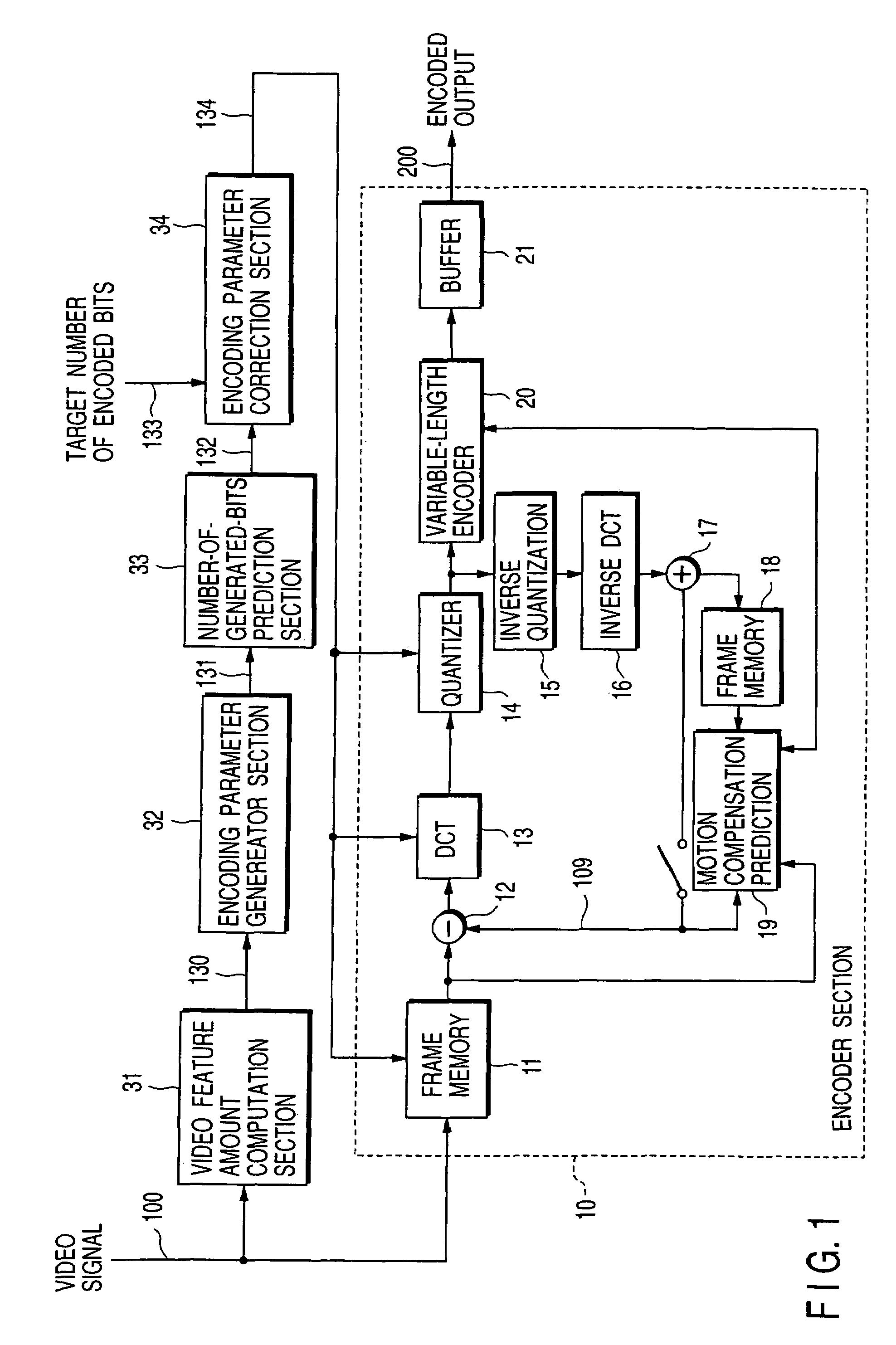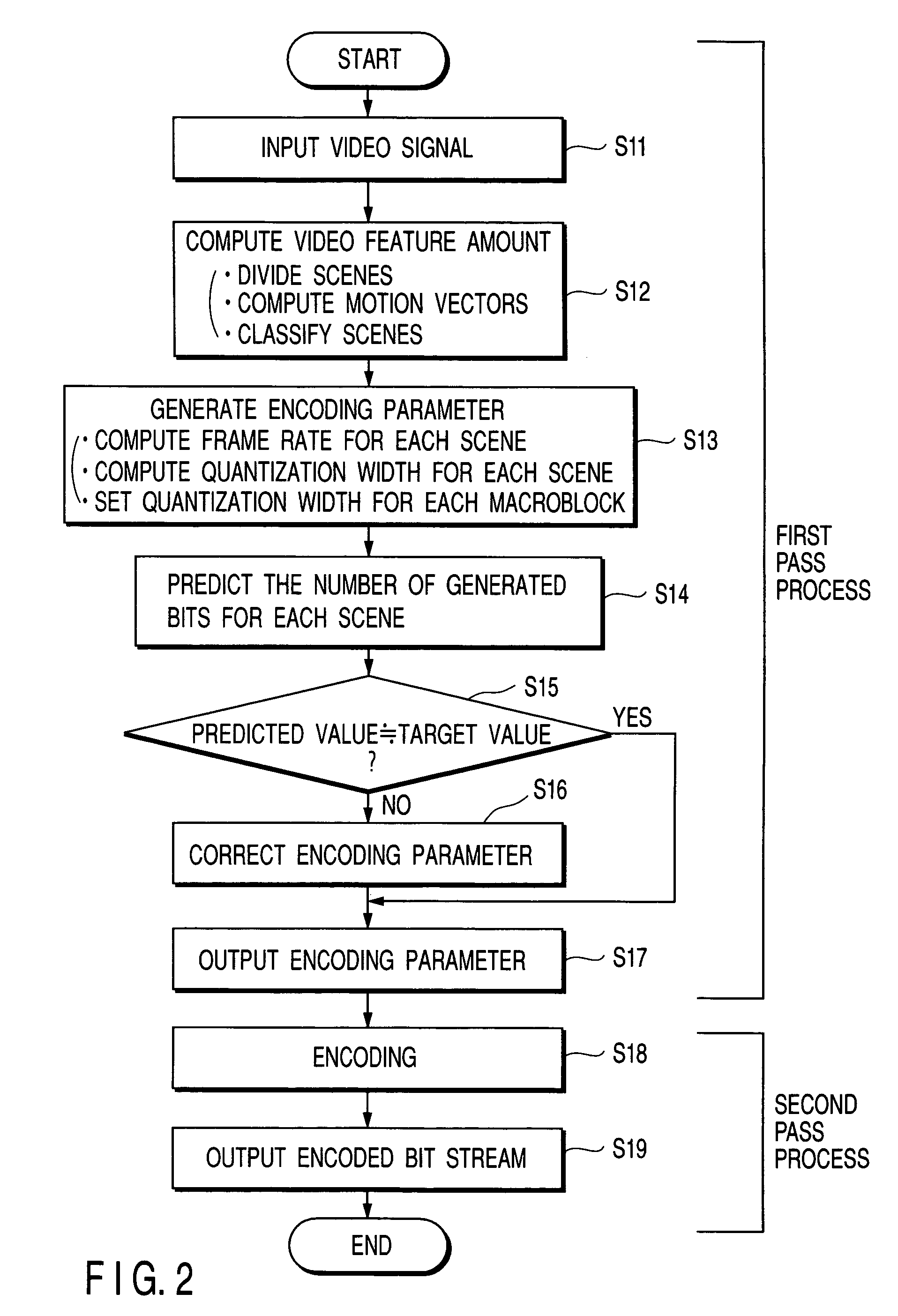Video encoding apparatus and method
- Summary
- Abstract
- Description
- Claims
- Application Information
AI Technical Summary
Benefits of technology
Problems solved by technology
Method used
Image
Examples
Embodiment Construction
[0028]Embodiments of the present invention will be described below with reference to the drawings.
[0029]FIG. 1 is a block diagram showing the configuration of a video encoding apparatus according to one embodiment of the present invention. An input video signal 100 is reproduced by a video recording and reproducing apparatus such as a digital VTR or a DVD system which can repeat reproducing the same signal a number of times and is input to a video feature computation section 31 and a frame memory 11 of an encoder section 10.
[0030]It is well known that motion compensation adaptive prediction, discrete cosine transformation, and quantization are used for the MPEG encoding. A two-pass encoding process will be described below.
[0031]In an encoding apparatus shown in FIG. 1, a video signal 100 is input to the video feature computation section 31 before the frame memory 100, an encoding parameter is calculated (first pass), and the calculated encoding parameter 134 and the video signal 100...
PUM
 Login to View More
Login to View More Abstract
Description
Claims
Application Information
 Login to View More
Login to View More - R&D
- Intellectual Property
- Life Sciences
- Materials
- Tech Scout
- Unparalleled Data Quality
- Higher Quality Content
- 60% Fewer Hallucinations
Browse by: Latest US Patents, China's latest patents, Technical Efficacy Thesaurus, Application Domain, Technology Topic, Popular Technical Reports.
© 2025 PatSnap. All rights reserved.Legal|Privacy policy|Modern Slavery Act Transparency Statement|Sitemap|About US| Contact US: help@patsnap.com



